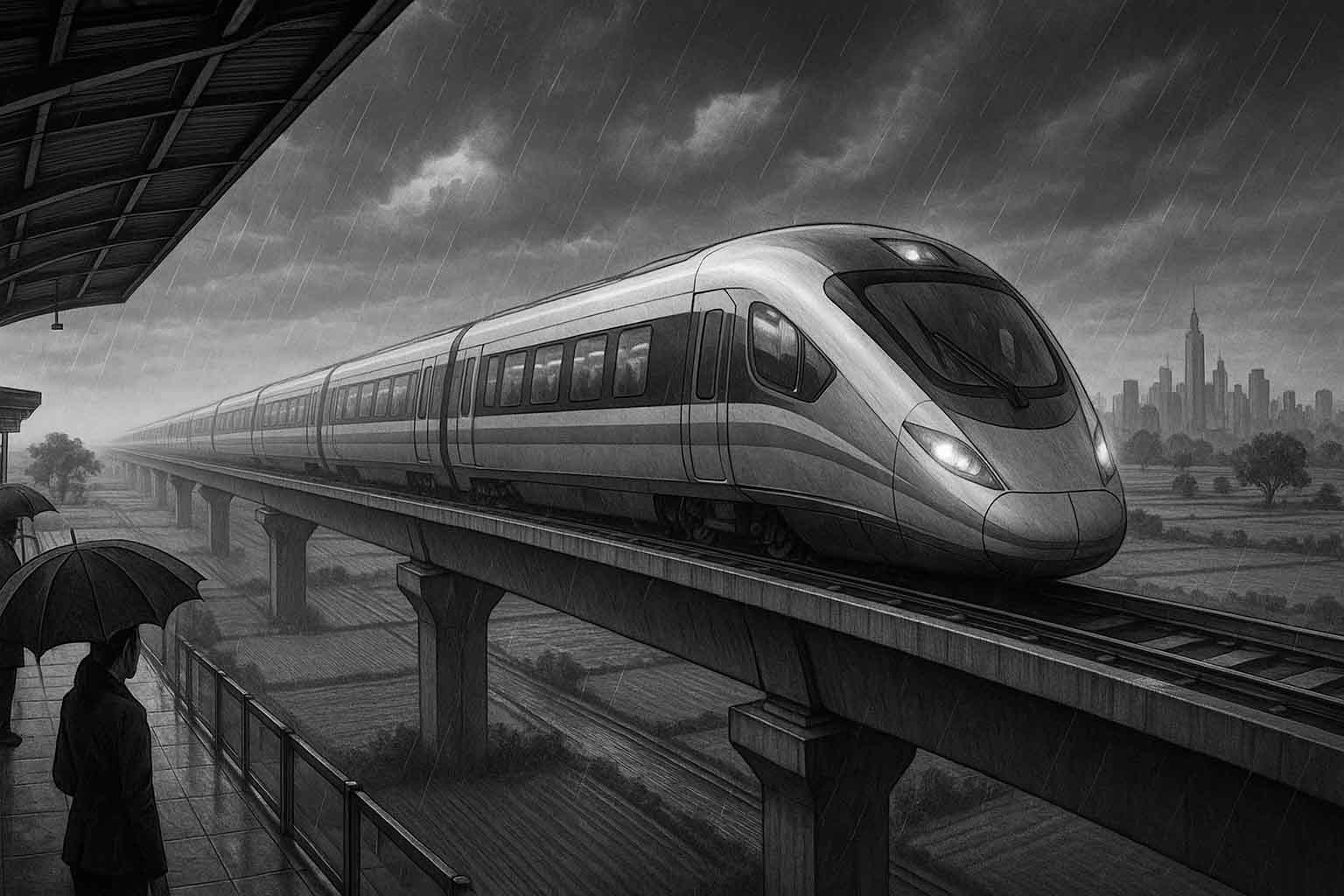New Delhi, October 1 –
Union Housing & Urban Affairs Minister Manohar Lal Khattar announced on Tuesday that work on the Delhi–Karnal Rapid Rail Transit System (RRTS) will begin shortly, with financing arrangements expected to be finalized in the coming months. The much-anticipated corridor promises to redefine connectivity in the northern belt, linking Delhi with Karnal through high-speed, modern transit.
The announcement comes even as Phase-1 of the Delhi–Ghaziabad–Meerut RRTS stabilizes operations and construction progresses rapidly on the Delhi–Gurugram–SNB–Alwar line. Together, these projects represent a transformational moment for NCR’s transport infrastructure, enabling seamless regional connectivity across multiple economic clusters.
What the Delhi–Karnal RRTS Means
The proposed corridor will:
- Cut travel time between Delhi and Karnal to under 90 minutes.
- Provide faster commuter options for workers traveling daily into NCR.
- Facilitate freight synergies with Haryana’s industrial hubs, particularly in Panipat and Karnal.
- Reduce pressure on NH-44 and intercity bus networks.
By integrating with the broader RRTS ecosystem, the Delhi–Karnal line is poised to unlock economic potential in the northern belt, strengthening regional logistics and passenger mobility.
Project Status and Financing
Minister Khattar confirmed that financial closure is near, with multilateral lenders and domestic institutions expected to back the project. Once contracts are awarded, civil works such as utility shifting, land acquisition, and station construction will begin.
Officials noted that detailed sectional commissioning timelines will be announced after “notice-to-proceed” letters are issued to contractors. Early groundwork is expected before year-end, with major construction commencing in early 2026.
Integration with Ongoing RRTS Lines
The Delhi–Karnal project adds to the ambitious RRTS network:
- Delhi–Ghaziabad–Meerut: Phase-1 operational, offering fast urban–regional connectivity.
- Delhi–Gurugram–SNB–Alwar: Construction underway, serving southern corridors.
- Delhi–Panipat–Karnal (extension): Expected to be aligned with Delhi–Karnal line for efficiency.
Together, these corridors aim to reduce car dependency, slash travel times, and integrate satellite towns into the NCR commuter belt.
Urban Planning and Coordination
The project will require extensive coordination with utilities, municipalities, and state agencies to minimize disruption. Land acquisition, particularly for stations, will be closely monitored. RRTS planners say integration with Delhi Metro, ISBTs, and major bus terminals will ensure a seamless multimodal transport network.
Economic Impacts: Why It Matters for Haryana
For Haryana, the Delhi–Karnal RRTS is more than just transport—it is an economic lifeline:
- Industrial Clusters: Karnal, Panipat, and Sonipat will benefit from faster freight and labor movement.
- Real Estate: Improved connectivity is likely to spur residential growth in towns along the corridor.
- Employment: Thousands of jobs in construction, operations, and allied services.
- Education & Healthcare: Students and patients will find faster access to Delhi’s facilities.
Experts argue that Karnal could emerge as a secondary hub in NCR’s economic geography, benefiting from its new accessibility.
Reducing Congestion on Roads
With NH-44 often choked by heavy truck and passenger traffic, the RRTS will offer a green, efficient alternative. Officials estimate it could reduce road traffic by up to 25% along the corridor, cutting pollution and fuel costs.
Public Reception
Commuters and local businesses have welcomed the announcement:
- Daily Travelers: “This will change our lives. Right now, a one-way trip can take three hours. With rapid rail, commuting to Delhi will finally be viable,” said a Karnal-based IT worker.
- Traders: Panipat’s textile and Karnal’s food processing industries hope faster connectivity will expand market access.
- Civic Voices: Residents stress the need for affordable fares to ensure inclusivity.
Challenges Ahead
Experts caution that challenges remain:
- Land Acquisition: Delays often slow large projects in NCR.
- Funding: Ensuring timely disbursal from lenders.
- Urban Integration: Stations must be linked smoothly to city transport systems.
- Environmental Concerns: Construction may disrupt agricultural belts; mitigation will be critical.
National Importance of RRTS Projects
The Delhi–Karnal corridor is part of a bigger national vision: to build regional rapid transit systems across India’s metros. Inspired by European and East Asian models, RRTS aims to:
- Slash long commutes.
- Decongest mega cities.
- Support balanced regional development.
With NCR as the pilot region, successful execution here will serve as a model for other corridors in Mumbai, Bengaluru, and Hyderabad.
Minister’s Closing Remarks
Minister Khattar said, “The Delhi–Karnal RRTS is not just a transport project—it is a symbol of progress. It will connect people, accelerate trade, and improve the quality of life across the northern belt.”
Conclusion: A Rail for the Future
As groundwork begins on the Delhi–Karnal Rapid Rail, optimism is high. The corridor promises to link Delhi’s capital dynamism with Haryana’s industrial strength, creating a backbone of mobility for millions.
The journey may take years to complete, but the vision is clear: a future where commuting between Delhi and Karnal takes minutes, not hours, and where infrastructure drives inclusive growth.
#RRTS #DelhiKarnal #NCRTC #UrbanTransport #Karnal #Gurugram #Infra #Trains #Connectivity #IndiaGrowth






















+ There are no comments
Add yours